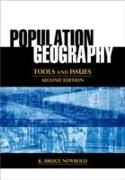Read more
This compact and accessible text provides a comprehensive, issue-oriented introduction to population geography. After grounding students in the fundamentals, K. Bruce Newbold then explains the tools and techniques commonly used to describe and understand population concepts using real-world issues and events. Drawing on both US and international cases, he explores such pressing concerns as HIV/AIDS, international migration, fertility, mortality, resource scarcity, and conflict. Every chapter includes methods and focus sections, as well as study questions, to provide a more in-depth discussion of the ideas and concepts developed in the book. In addition, a wide array of maps, tables, and figures illustrate and enhance the cases. Newbold highlights the geographical perspective-with its ability to provide powerful insights and bridge disparate issues-by emphasizing the role of space and place, location, regional differences, and diffusion. Arguing that an understanding of population is essential to prepare for the future, this cogent text will provide upper-division undergraduates with a thorough grasp of the field.
List of contents
Population Geography: An Introduction Chapter 1: World Population Chapter 2: Population Data Chapter 3: Population Distribution and Composition Chapter 4: Fertility Chapter 5: Mortality Chapter 6: Internal Migration Chapter 7: International Migration Flows: Immigrants and Transnational Migrants Chapter 8: Refugees and Internally Displaced Persons Chapter 9: Urbanization Chapter 10: Population Policies Chapter 11: Population Growth: Linking to Economic Development, Resource Scarcity, and Food Security Conclusion: Doing Population Geography
About the author
K. Bruce Newbold is professor in the School of Geography and Earth Sciences and director of the McMaster Institute of Environment and Health at McMaster University.

